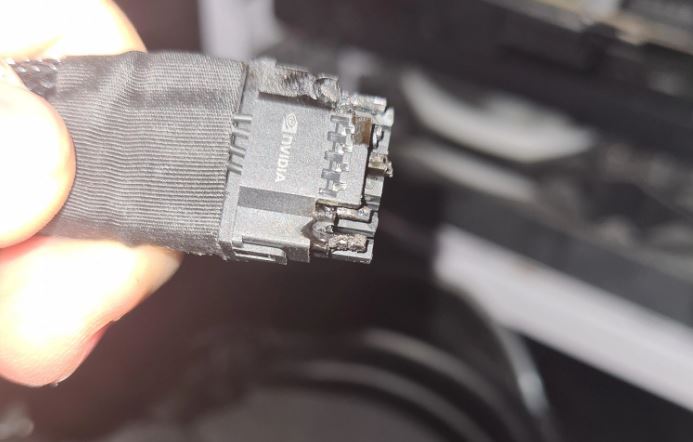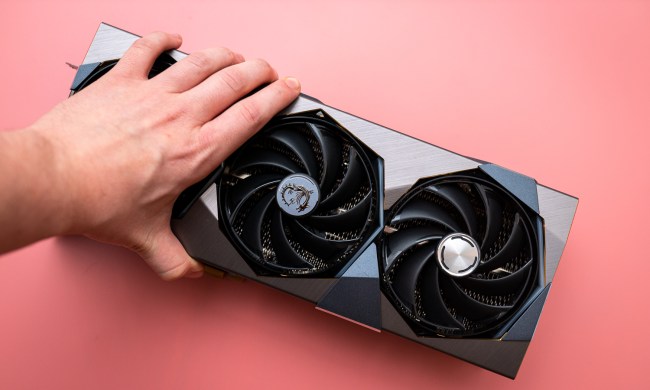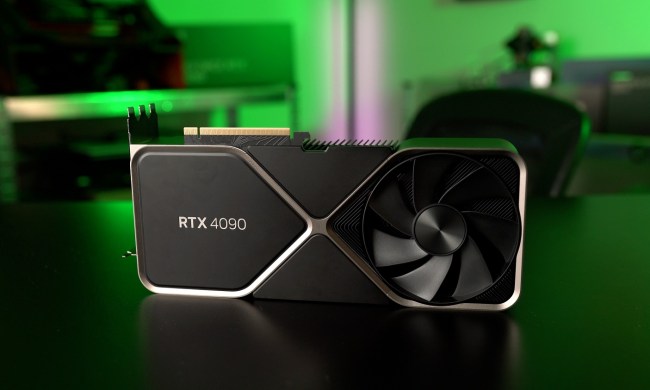It appears that there might be a problem with the 16-pin connector that powers the Nvidia GeForce RTX 4090. According to a Redditor who owns the card, their GPU actually went up in flames, and parts of it have melted as a result.
Is this a more widespread issue, and should you keep a fire extinguisher nearby at all times if you own an RTX 4090?
Update: There have now been two reports of burning and melting on an RTX 4090 GPU, and they don’t both apply to the same graphics cards. While the one described in the article below pertains to a Gigabyte GPU, the new report talks about an Asus RTX 4090 TUF Gaming OC GPU. However, in both cases, the problem stems from the same thing — the 16-pin adapter cable.
If you own an RTX 4090 or if you’re looking to buy one, please make sure not to bend the cable during installation. Until special adapters are up for sale, you’ll need to make sure your case is big enough not to force you to bend the 12+4-pin ATX 12VHPWR connector. TechPowerUp notes that you need to leave a distance of at least 1.37 inches to lower the pressure on the contacts, thus preventing any burning or damage. Nvidia is yet to comment on these issues.
Meanwhile, AMD seems to be avoiding the problem altogether with its new Radeon RX 7000 graphics cards. According to Tom’s Hardware, AMD is not planning to adopt the 12VHPWR connector that seems to be causing the problems with Nvidia cards right now.
The original article follows below.

One of the first reports of power-related issues with the RTX 4090 is here, and it’s a huge one from the get-go. A Redditor, reggie_gakil, posted on the Nvidia subreddit to announce that their Gigabyte GeForce
The RTX 4090 owner was playing Red Dead Redemption 2 when the GPU suddenly caught fire. The card was connected with the official Nvidia cable, but something must have gone wrong, because, in the end, both the power adapter and the power connector ended up melting. To prove the claim, the Redditor shared two pictures.
The photos show a melted power connector on the card’s PCB, as well as the power adapter in a similar state. It appears that the main 12 pins, located under the four extra pins, were the cause here. However, it’s hard to speculate at this point. The end result is clear, though, because almost the entire adapter has melted. Needless to say, the card is unusable.
This is certainly unfortunate, but as this is the first report we’ve seen, it’s important to take it with a little bit of skepticism and not assume that this will be a common problem with the RTX 4090. However, as noted by Wccftech, the 16-pin adapter cable is very thick, and that might (indirectly) be what caused this problem in the first place.

Fitting the cable alongside the enormous RTX 4090 into a less-than-roomy PC case is quite a challenge. As a result, many users end up having to bend the cable in order to even close their case. Unfortunately, this may have a negative effect on the temperatures and could lead to something as bad as what happened to reggie_gakil.
If you’re one of the early adopters of Nvidia’s latest RTX 40-series GPUs, make sure you’re building your rig inside a spacious PC case so that the GPU can comfortably fit. Cable manufacturers are already working on 90-degree angled connectors to help users with smaller cases fit their RTX 4090 without any risks.
As for the card in question, the Redditor will have to return it, so we may never know what really happened here. Let’s hope that Nvidia or Gigabyte will shed some light on the problem — if there actually is one.




